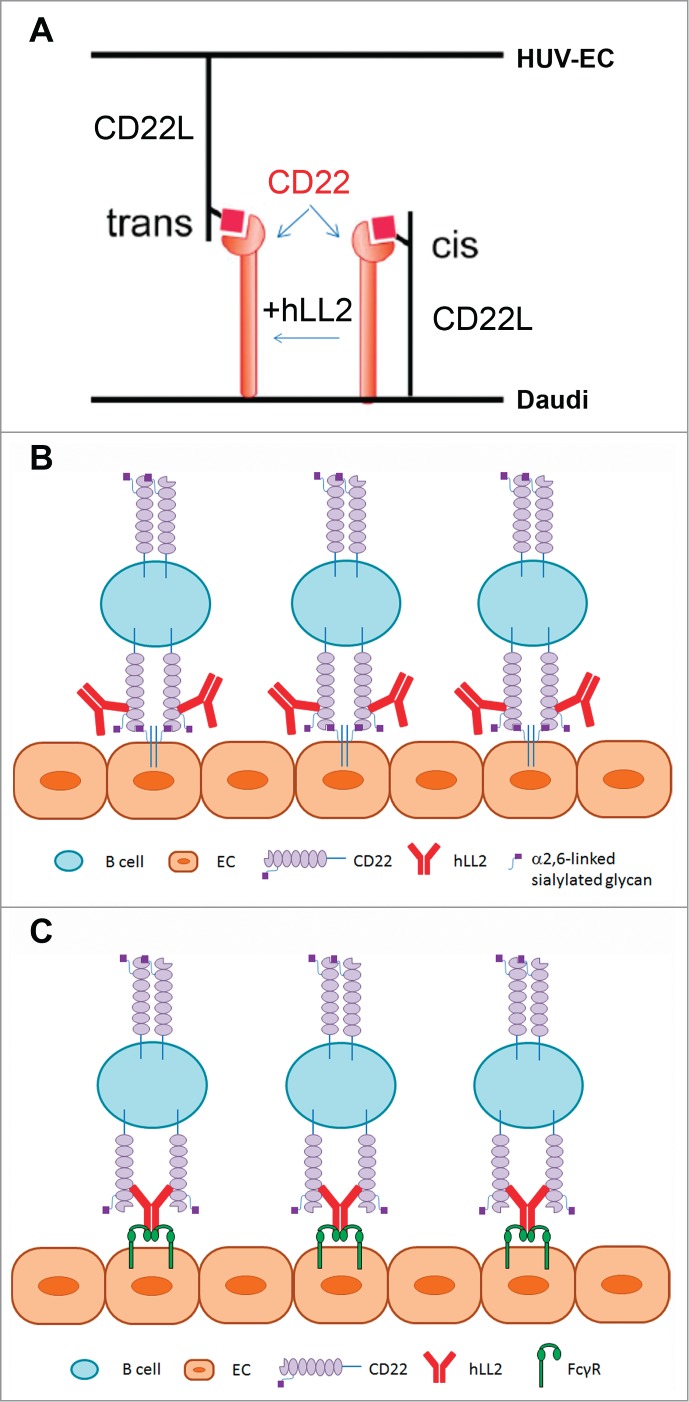Figure 8.

Schematics of proposed mechanism of epratuzumab-mediated interaction of endothelial cells with CD22-expressing B cells. (A) CD22 can interact with CD22L (sialylated glycoproteins) on the same (cis) or different cells (trans). To induce the trans interaction, it is necessary to overcome the cis interaction, which may be provided by non-ligand-blocking epratuzumab. Because Daudi cells have a high levels of CD22L, the binding of CD22 to (activated) endothelial cells are inhibited by cis-binding. The ligation of epratuzumab to CD22 is likely to break up the cis-interaction, and because it is not a blocking antibody, epratuzumab may not interfere with the further binding of CD22 to the CD22L expressed on activated endothelial cells. Thus, epratuzumab plays an indirect role to facilitate an efficient binding of B cells to endothelial cells, which mimics the direct binding of B cells to immobilized epratuzumab. (B) Epratuzumab enables the attachment of CD22-expressing B cells to EC in the endothelium via the trans-interaction of CD22 with CD22L. (C) Epratuzumab links CD22-expressing B cells to EC in the endothelium via the Fc-FcγR binding.
